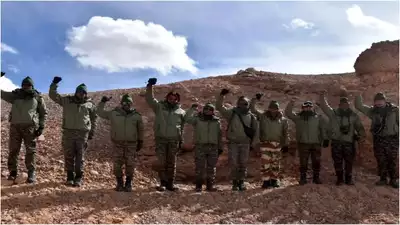NEW DELHI: The Army “successfully” undertook a full-fledged patrol to one of the five patrolling points (PPs) in the Depsang Plains in eastern Ladakh on Monday, after conducting similar patrols in Demchok last week.
“After the consensus reached between India and China on October 21 for disengagement, both sides had earlier undertaken verification patrols in Demchok and Depsang. Full-fledged patrolling had then resumed in Demchok,” a senior officer told TOI.
On Monday, a patrol of 15 soldiers was sent to one of the PPs in Depsang Plains as well, with prior intimation to the People’s Liberation Army (PLA) as per the bilateral pact on “patrolling arrangements” announced on October 21.
“After the verification patrols, this was the first independent patrol sent in Depsang. It came back to base after several hours on Monday evening and reported there were no hindrances put up by the PLA on the way,” he added.
With the “task” assigned to the patrol being “completed”, the Army will now also send patrols to the other four PPs in Depsang. “The ball has been set in motion,” the officer said, after the new pact led to disengagement in the remaining two of the seven major face-off sites that arose after multiple Chinese incursions into eastern Ladakh in April-May 2020.
“This is yet another positive step towards maintaining peace and tranquillity on the Line of Actual Control,” the Leh-based 14 Corps also said in a post on `X’ late on Monday night, with a “file photo” attached to it.
Though the Army now has “unrestricted access” to the five PPs in Depsang and two in Demchok, which was earlier blocked by Chinese soldiers, long-duration patrols to certain areas will be a “tough task” due to the approaching winter. “We will patrol some areas throughout the winter, but it will not be possible in a few other places due to weather conditions,” he said.
The PLA, too, is conducting similar patrols with advance information to India to prevent the possibility of any clash. As part of the earlier verification patrols, Indian soldiers had gone up to PP-10, 11, 11A, 12 and 13 in Depsang Plains for the first time in almost five years through the “Bottleneck”, the area around 18-km inside Indian territory where the PLA was blocking them from going any further since April-May 2020.
After the Depsang-Demchok pact, India now wants the restoration of patrolling rights in areas where “no patrol buffer zones” were established after previous rounds of disengagement till September 2022.
These buffer zones at Galwan, north bank of Pangong Tso, the Kailash Range and the larger Gogra-Hot Springs area, varying from 3-km to 10-km, largely came up on what India considers to be its own territory.
There is, of course, still a long way to go for India’s demand for de-escalation and de-induction of the over 50,000 PLA troops forward deployed in eastern Ladakh, with another 90,000 across Sikkim and Arunachal Pradesh in the eastern sector, to be accepted by China.
